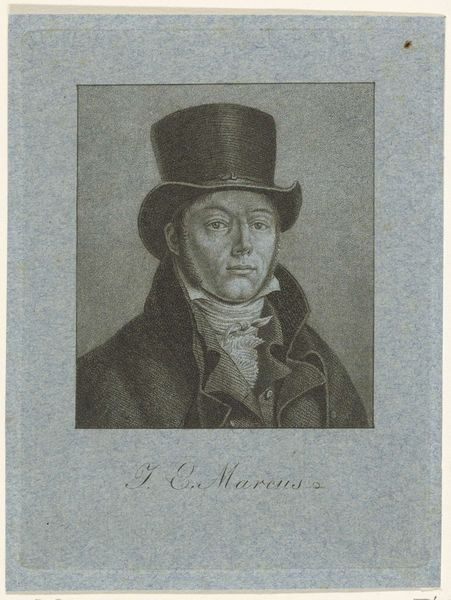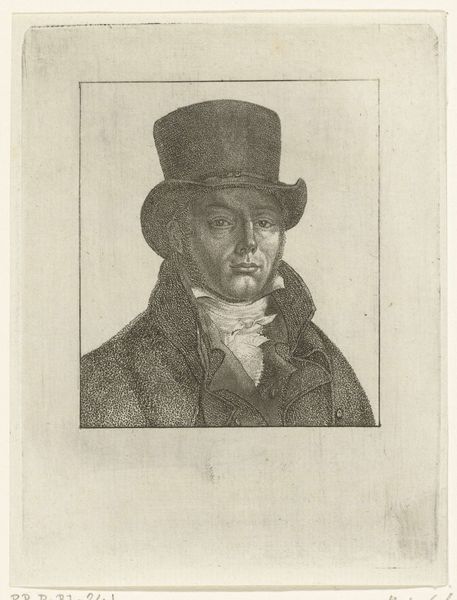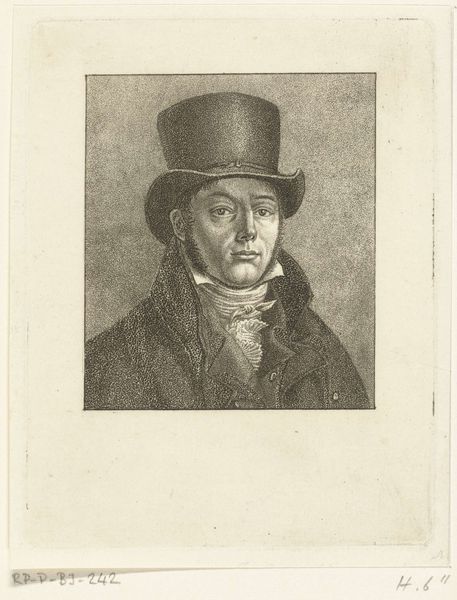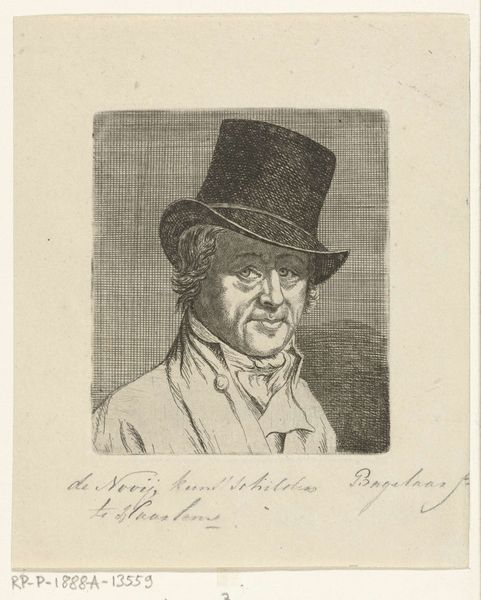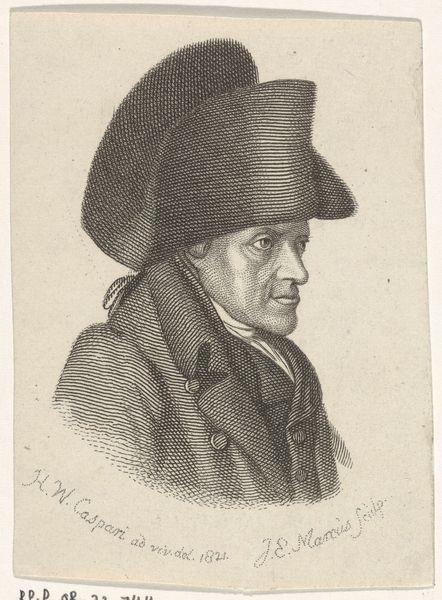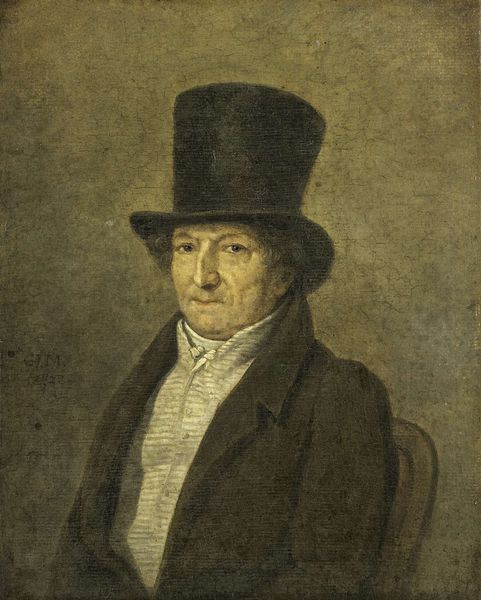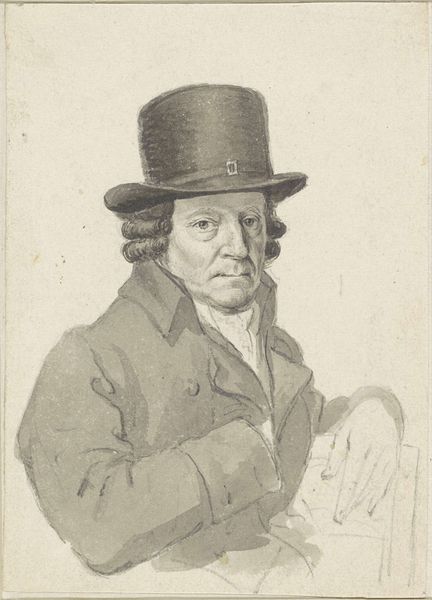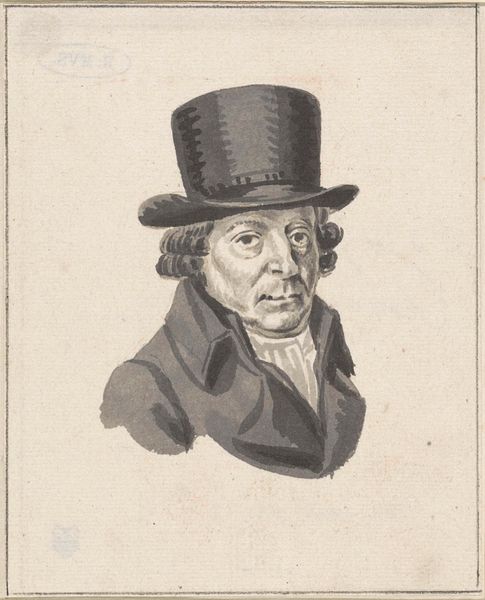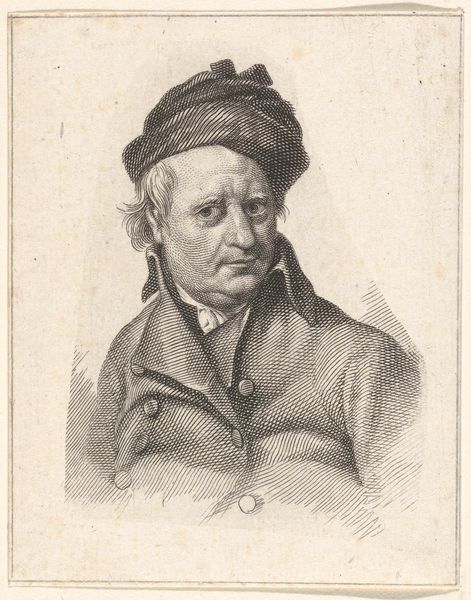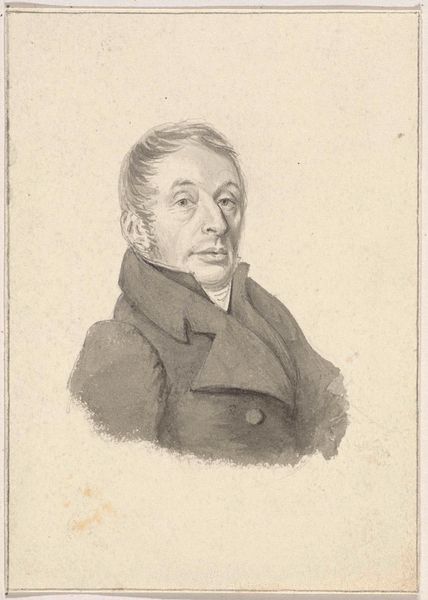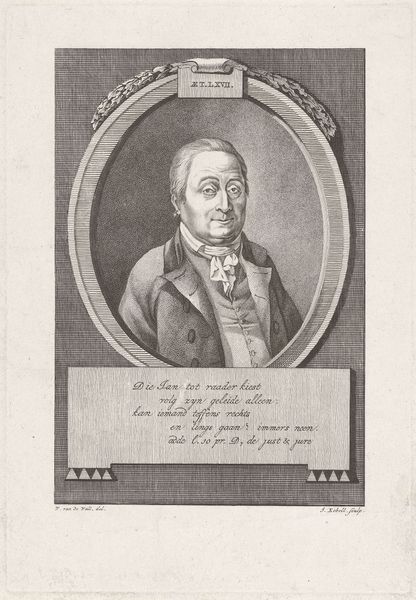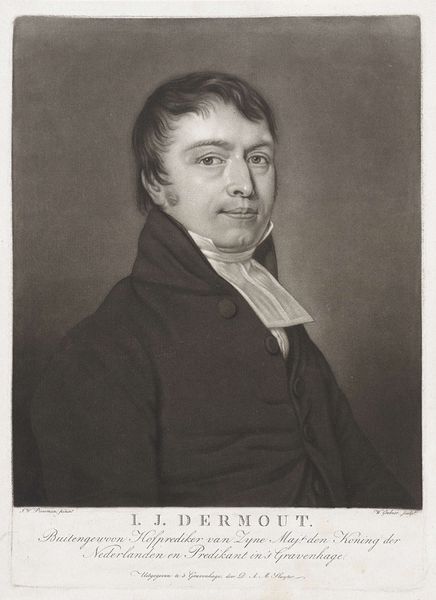
print, engraving
#
portrait
#
pencil drawn
#
neoclacissism
# print
#
pencil sketch
#
old engraving style
#
figuration
#
form
#
pencil drawing
#
line
#
history-painting
#
engraving
#
realism
Dimensions: height 120 mm, width 92 mm
Copyright: Rijks Museum: Open Domain
Editor: Here we have Ernst Willem Jan Bagelaar’s portrait of Jacob Ernst Marcus, created sometime between 1798 and 1826. It's a print, and something about the direct gaze and simple lines makes it feel quite modern, even though it's a historical portrait. What do you see in this piece, especially considering its time? Curator: The portrait speaks volumes about the construction of identity in the late 18th and early 19th centuries. Marcus’s steady gaze and fashionable attire signal a desire to project an image of bourgeois respectability and self-assuredness during a period of intense social and political upheaval following the French Revolution. Consider the power dynamics at play: Who had access to portraiture, and what statements were they trying to make about themselves and their position in society? This isn’t simply a representation; it’s a performance of self, shaped by societal expectations. How might ideas of class and status be read in this image? Editor: I hadn’t thought about it as a "performance" before, but now that you mention it, the subject’s controlled expression and the very act of commissioning a portrait definitely feel like carefully curated choices. The print medium, however, makes me think about wider accessibility and if maybe it’s suggesting a message for audiences beyond just the elite class. Curator: Precisely. The use of printmaking opens up questions around the dissemination of images and the potential for a broader audience. This raises critical questions: Who was this portrait intended for? What socio-political dialogues might it have engaged with, and how did its medium shape its message within the rapidly changing media landscape of the time? Consider this in dialogue with our current visual and digital media landscape. Editor: That’s fascinating. Thinking about this image in terms of its historical context, as well as how it relates to our present, has given me a new appreciation for portraiture as a form of social commentary. Curator: Indeed, seeing art as embedded within intricate networks of power, identity, and representation can deeply transform our understanding.
Comments
No comments
Be the first to comment and join the conversation on the ultimate creative platform.
